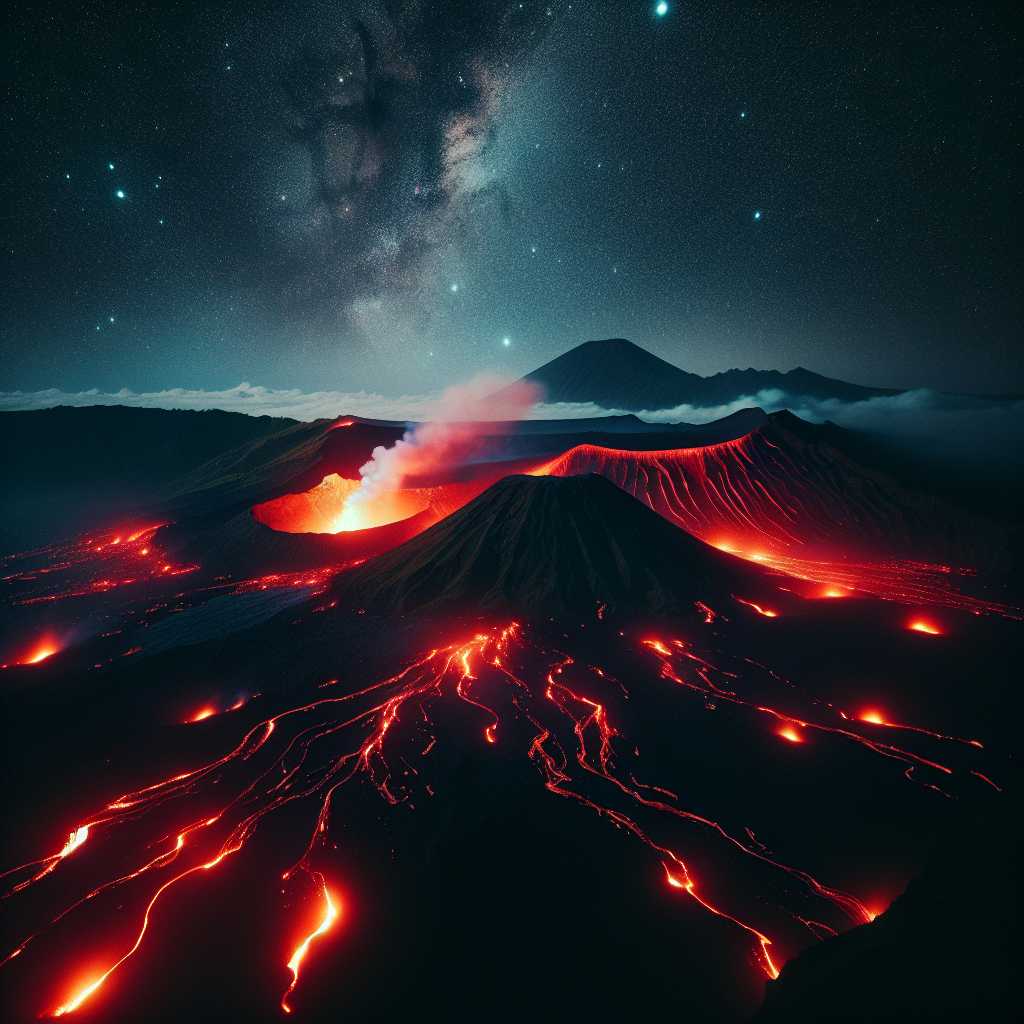Example Article
Introduction to Kīlauea: The World’s Most Active Volcano
Kīlauea, located on the Big Island of Hawaii, is one of the most renowned active volcanoes on the planet. Unlike many dormant giants, Kīlauea has been erupting almost continuously since 1983, making it a focal point for volcanologists and tourists alike. Its persistent activity offers a unique opportunity to study volcanic processes in real time and observe the creation of new landforms. The volcano’s frequent eruptions have shaped not only the island’s landscape but also its cultural and ecological fabric.
This volcano is part of the Hawaiian hotspot, a volcanic region created by a plume of magma rising from deep within the Earth’s mantle. Unlike subduction zone volcanoes such as Mount Etna, Kīlauea’s eruptions are typically effusive rather than explosive. This means lava flows steadily from its vents instead of erupting violently, allowing scientists to safely study lava dynamics and geological changes.
Understanding Kīlauea provides critical insights into volcanic hazards and mitigation strategies worldwide. Its accessibility and relatively predictable behaviour make it an invaluable natural laboratory for researchers seeking to understand volcanic activity’s broader implications.
Geological Significance and Unique Characteristics
Kīlauea’s geological setting is distinct from many other famous volcanoes due to its hotspot origin beneath the Pacific Plate. This contrasts with volcanoes like Mount Etna, which are formed by tectonic plate collisions and subduction zones. The Hawaiian hotspot remains stationary while the Pacific Plate moves over it, creating a chain of islands and seamounts stretching across the ocean floor.
One of Kīlauea’s most fascinating features is its summit caldera — a large volcanic crater formed by collapse following magma chamber evacuation. Within this caldera lies Halemaʻumaʻu Crater, which frequently hosts a lava lake that serves as a glowing window into the volcano’s magma system. This persistent lava lake has become an iconic symbol of volcanic activity worldwide.
Additionally, Kīlauea’s eruptions produce basaltic lava that flows rapidly and can cover vast areas in a short time. These fluid lava flows contrast sharply with more viscous magmas that cause explosive eruptions elsewhere. The resulting landscapes are characterised by smooth pahoehoe lava fields interspersed with rugged ʻaʻā flows, offering dramatic evidence of volcanic processes in action.
Cultural Impact and Human Interaction
For centuries, Kīlauea has held profound cultural significance for Native Hawaiians, who regard it as the home of Pele, the goddess of fire and volcanoes. The mythology surrounding Pele weaves together respect for nature’s power with spiritual reverence, influencing local customs and traditions deeply connected to the land.
In modern times, Kīlauea has attracted scientists, adventurers, and tourists eager to witness its fiery displays firsthand. While this has brought economic benefits through tourism, it also poses challenges related to safety and environmental preservation. Communities living near the volcano must balance development with preparedness for potential volcanic hazards such as lava flows, ash fall, and gas emissions.
The 2018 eruption was particularly impactful; it destroyed hundreds of homes but also reshaped parts of the island dramatically. The event underscored both the destructive power of nature and human resilience in adapting to ever-changing landscapes shaped by volcanic forces.
Environmental Consequences and Ecosystem Renewal
Volcanic activity at Kīlauea plays a paradoxical role in both destroying and renewing ecosystems. Fresh lava flows initially sterilise everything in their path — wiping out vegetation and displacing wildlife — but over time they create fertile ground for new life to emerge. This cycle of destruction and renewal exemplifies nature’s resilience.
Pioneer species such as lichens and ferns are among the first to colonise new lava fields. Their growth gradually modifies the substrate, enabling more complex plants to establish themselves. Over decades or even centuries, lush tropical forests can regenerate on what was once barren rock.
This dynamic process offers valuable lessons about ecological succession and habitat restoration amid environmental disturbances. It also highlights how volcanic landscapes serve as natural laboratories for studying adaptation and recovery in challenging conditions.
Conclusion: Lessons from Kīlauea’s Living Landscape
Kīlauea stands as a remarkable testament to Earth’s ongoing geological activity—a living giant whose eruptions continuously shape both land and life around it. Its steady effusive eruptions provide unparalleled opportunities for scientific study while inspiring awe among visitors who witness nature’s raw power.
The volcano’s cultural significance underscores humanity’s deep-rooted connection with natural phenomena, reminding us that respecting such forces is integral to coexistence. Furthermore, Kīlauea exemplifies how destruction can lead to renewal, offering hope in an era where environmental change is a global concern.
Studying Kīlauea enriches our understanding not only of volcanology but also of broader themes such as resilience, adaptation, and the complex interplay between humans and their environment. This majestic volcano continues to be both a challenge and a beacon—inviting us to learn from its fiery heart.
Notes
- Kīlauea has erupted nearly continuously since 1983, making it one of the longest-lasting eruptions recorded.
- The Hawaiian hotspot responsible for Kīlauea remains stationary while tectonic plates move over it at rates up to several centimetres per year.
- The 2018 eruption destroyed over 700 homes but also added approximately 875 acres (354 hectares) of new land to Hawaii.

